Cembranoids of Soft Corals: Recent Updates and Their Biological Activities
- PMID: 33890249
- PMCID: PMC8141092
- DOI: 10.1007/s13659-021-00303-2
Cembranoids of Soft Corals: Recent Updates and Their Biological Activities
Abstract
Soft corals are well-known as excellent sources of marine-derived natural products. Among them, members of the genera Sarcophyton, Sinularia, and Lobophytum are especially attractive targets for marine natural product research. In this review, we reported the marine-derived natural products called cembranoids isolated from soft corals, including the genera Sarcophyton, Sinularia, and Lobophytum. Here, we reviewed 72 reports published between 2016 and 2020, comprising 360 compounds, of which 260 are new compounds and 100 are previously known compounds with newly recognized activities. The novelty of the organic molecules and their relevant biological activities, delivered by the year of publication, are presented. Among the genera presented in this report, Sarcophyton spp. produce the most cembranoid diterpenes; thus, they are considered as the most important soft corals for marine natural product research. Cembranoids display diverse biological activities, including anti-cancer, anti-bacterial, and anti-inflammatory. As cembranoids have been credited with a broad range of biological activities, they present a huge potential for the development of various drugs with potential health and ecological benefits.
Keywords: Anti-bacterial; Anti-cancer; Anti-inflammatory; Cembranoids; Diterpene; Lobophytum; Sarcophyton; Sinularia; Soft corals.
Conflict of interest statement
The authors declare no conflict of interest.
Figures

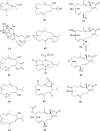
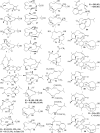
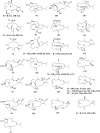
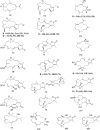
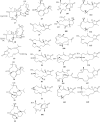

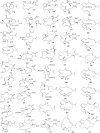


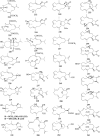

Similar articles
-
A Brief Review on New Naturally Occurring Cembranoid Diterpene Derivatives from the Soft Corals of the Genera Sarcophyton, Sinularia, and Lobophytum Since 2016.Molecules. 2019 Feb 21;24(4):781. doi: 10.3390/molecules24040781. Molecules. 2019. PMID: 30795596 Free PMC article. Review.
-
Cytotoxic Effects of Sarcophyton sp. Soft Corals-Is There a Correlation to Their NMR Fingerprints?Mar Drugs. 2017 Jul 4;15(7):211. doi: 10.3390/md15070211. Mar Drugs. 2017. PMID: 28677625 Free PMC article.
-
Screening of NO Inhibitor Release Activity from Soft Coral Extracts Origin Palu Bay, Central Sulawesi, Indonesia.Antiinflamm Antiallergy Agents Med Chem. 2019;18(2):126-141. doi: 10.2174/1871523018666190222115034. Antiinflamm Antiallergy Agents Med Chem. 2019. PMID: 30799798 Free PMC article.
-
Cembranoids from the soft corals Sinularia granosa and Sinularia querciformis.Chem Pharm Bull (Tokyo). 2010 Apr;58(4):464-6. doi: 10.1248/cpb.58.464. Chem Pharm Bull (Tokyo). 2010. PMID: 20410624
-
Recent Updates on Corals from Nephtheidae.Chem Biodivers. 2019 Jun;16(6):e1800692. doi: 10.1002/cbdv.201800692. Epub 2019 May 20. Chem Biodivers. 2019. PMID: 30957385 Review.
Cited by
-
Cytotoxic Compounds from Alcyoniidae: An Overview of the Last 30 Years.Mar Drugs. 2022 Feb 11;20(2):134. doi: 10.3390/md20020134. Mar Drugs. 2022. PMID: 35200663 Free PMC article. Review.
-
Cembranoid Diterpenes from South China Sea Soft Coral Sarcophyton crassocaule.Mar Drugs. 2024 Nov 29;22(12):536. doi: 10.3390/md22120536. Mar Drugs. 2024. PMID: 39728111 Free PMC article.
-
Polyoxygenated cembrane-type diterpenes from the Hainan soft coral Lobophytum crassum as a promising source of anticancer agents with ErbB3 and ROR1 inhibitory potential.Acta Pharmacol Sin. 2025 Jan;46(1):196-207. doi: 10.1038/s41401-024-01347-z. Epub 2024 Jul 29. Acta Pharmacol Sin. 2025. PMID: 39075227
-
Sarcoconvolutums F and G: Polyoxygenated Cembrane-Type Diterpenoids from Sarcophyton convolutum, a Red Sea Soft Coral.Molecules. 2022 Sep 8;27(18):5835. doi: 10.3390/molecules27185835. Molecules. 2022. PMID: 36144570 Free PMC article.
-
Exploring the therapeutic potential of diterpenes in gastric cancer: Mechanisms, efficacy, and clinical prospects.Biomol Biomed. 2024 Dec 11;25(1):1-15. doi: 10.17305/bb.2024.10887. Biomol Biomed. 2024. PMID: 39151097 Free PMC article. Review.
References
-
- Townsend M, Davies K, Hanley N, Hewitt JE, Lundquist CJ, Lohrer AM. Front. Mar. Sci. 2018;5:359.
-
- E. O. Wilson and F. Peter M., Biodiversity (National Academies Press, Washington, D.C., 1988), p. 989. - PubMed
-
- Zeppilli D, Leduc D, Fontanier C, Fontaneto D, Fuchs S, Gooday AJ, Goineau A, Ingels J, Ivanenko VN, Kristensen RM, Neves RC, Sanchez N, Sandulli R, Sarrazin J, Sørensen MV, Tasiemski A, Vanreusel A, Autret M, Bourdonnay L, Claireaux M, Coquillé V, De Wever L, Rachel D, Marchant J, Toomey L, Fernandes D. Mar. Biodiv. 2018;48:35.
Publication types
LinkOut - more resources
Full Text Sources
Other Literature Sources
Research Materials
Miscellaneous

